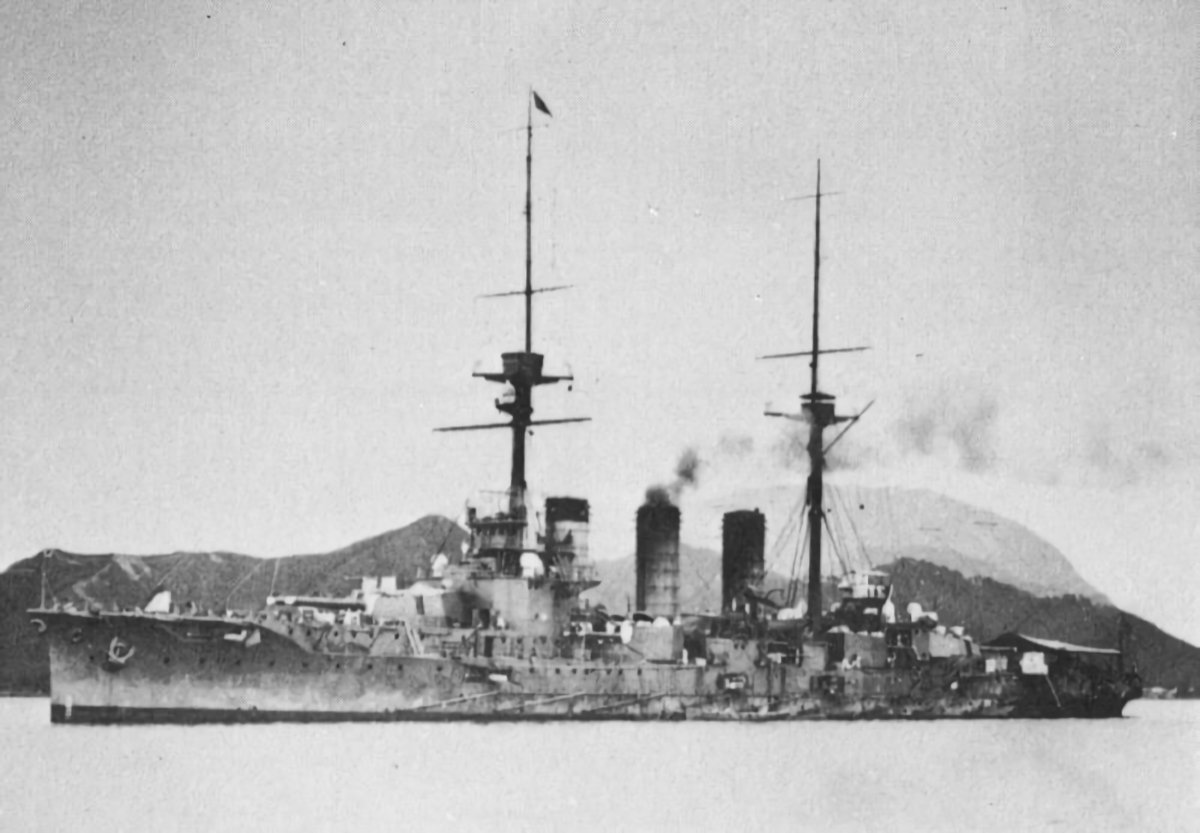Japanese Battlecruiser Ibuki
Commissioned on 11 November 1907, Ibuki was originally classified as an armoured cruiser. On 28 August 1912, the Ibuki and her sister ship Kurama were re-classified as battlecruisers.
During the First World War, Ibuki along with the Australian light cruiser HMAS Sydney, Ibuki escorted a convoy consisting of 20,000 Australian and New Zealand soldiers and 7,500 horses, across the Indian Ocean. During the passage, HMAS Sydney left the convoy to engage the German light cruiser Emden at the Battle of Cocos. Although the more powerful vessel, Ibuki was ordered to stay with the convoy as she was their only protection.
Post-war Ibuki was sold for scrap on 20 September 1923 in accordance with the Washington Treaty.
| Displacement | 14,871 t (14,636 long tons) (standard); 15,845 t (15,595 long tons) (max) |
| Length | 140 m (450 ft) p.p.; 148 m (485 ft) oa |
| Beam | 23 m (75 ft 6 in) |
| Draft | 8 m (26 ft 3 in) |
| Installed power | 24,000 shp (18,000 kW) |
| Propulsion | 2 × geared Curtis steam turbines Mirabura boilers 2 × shafts |
| Speed | 21.5 kn (39.8 km/h; 24.7 mph) |
| Range | 5,000 nmi (9,300 km; 5,800 mi) at 14 kn (26 km/h; 16 mph) |
| Capacity | Coal: 610 t (600 long tons) (normal); 2,000 t (2,000 long tons) (maximum) Fuel Oil: roughly 250 t (250 long tons) |
| Complement | 844 |
| Armament | 2 × twin 12-inch 41st Year Type guns 4 × twin 8-inch (200 mm) 41st Year Type guns 14 × single 4.7-inch (120 mm) 41st Year Type guns 4 × 8 cm (3.1 in) guns 3 × 45 cm (17.7 in) torpedo tubes |
| Armor | Belt: Amidships: 10–18 cm (4–7 in) Ends: 10 cm (4 in) Barbettes: 18 cm (7 in) Turrets: Main: 18 cm (7 in) Secondary: 12.5 cm (5 in) Conning Tower: Forward: 20 cm (7.9 in) Aft: 15 cm (6 in) Deck: Main: 5.2 cm (2 in) Lower Deck Redoubt: 12.7 cm (5 in) |




